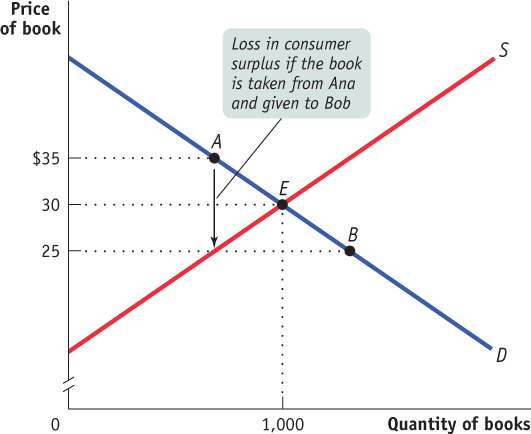| Figure 50.2 | Reallocating Consumption Lowers Consumer Surplus |

Reallocating Consumption Lowers Consumer SurplusAna (point A) has a willingness to pay of $35. Bob (point B) has a willingness to pay of only $25. At the market equilibrium price of $30, Ana purchases a book but Bob does not. If we rearrange consumption by taking a book from Ana and giving it to Bob, consumer surplus declines by $10 and, as a result, total surplus declines by $10. The market equilibrium generates the highest possible consumer surplus by ensuring that those who consume the good are those who most value it.
[Leave] [Close]